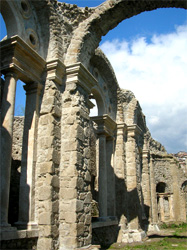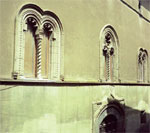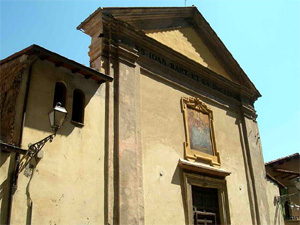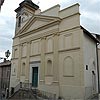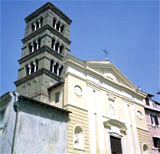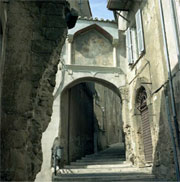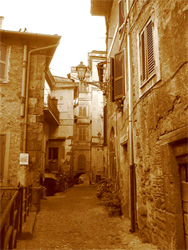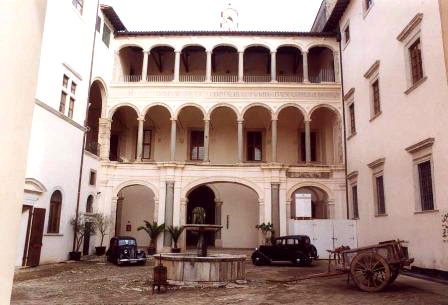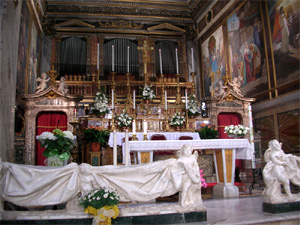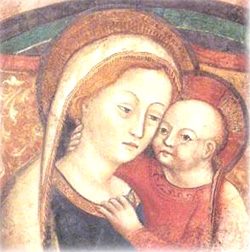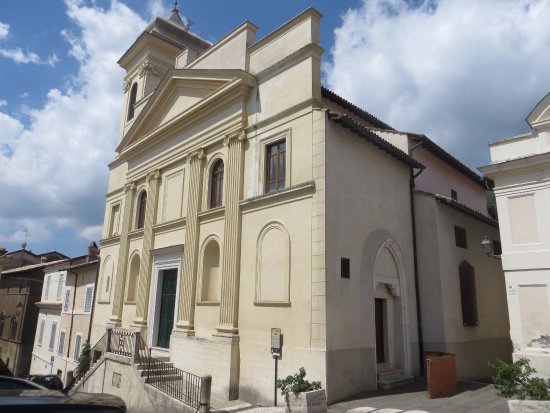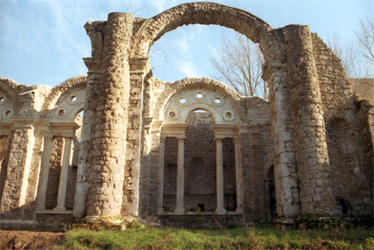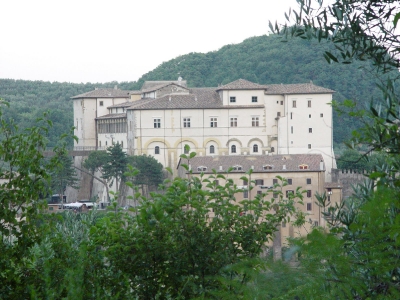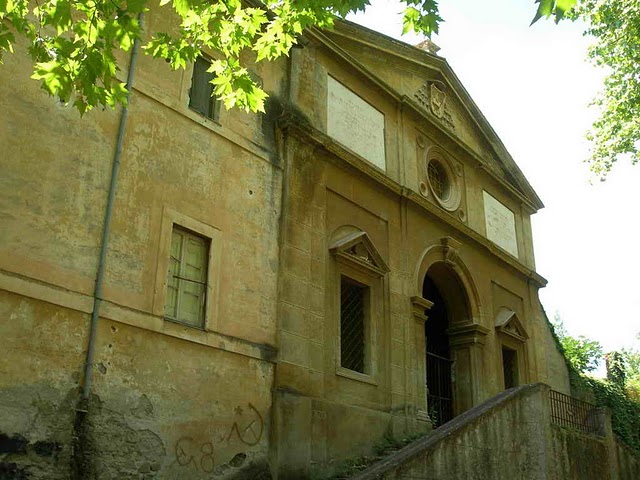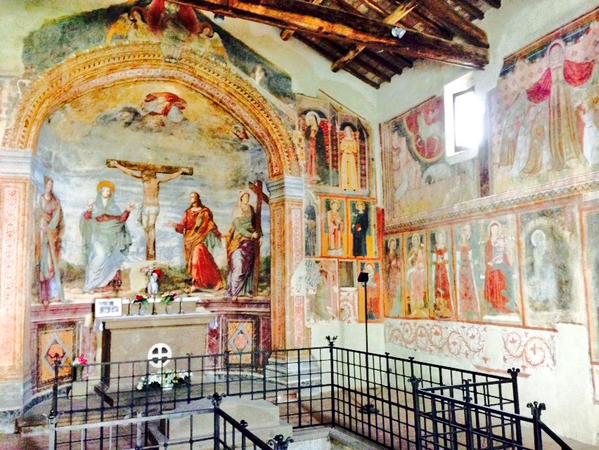Visit to Genazzano

VISIT TO GENAZZANO (Roma)
Via Francigena del Sud- dir. Prenestina
Arriving at Genazzano, outside the Roman Gate, on the southern section of the ancient Via Francigena, you will find the romantic Ninfeo, a Renaissance monument attributed to Bramante. Built in a green valley, crossed by a stream, the complex was never fully completed. It was probably built as a resort and is notable for the three Serlian arches which inspired the architect Palladio when designing some of his Venetian villas.
The Colonna Castle, which dates back to the 11th century, dominates the area on the spur of rock where the town is built, it is a “ship” amid the green Prenestini Mountains. The first defensive outpost was transformed into the main residence of the Colonna family in the late Middle Ages. Oddone Colonna, who became Pope Martin V in 1417, extended the residential west wing while also remodeling the urban fabric of the town. During the Renaissance, first the Borgia then again the Colonna family made various successive interventions which completed the transformation of the old manor into an imposing noble residence. The castle has belong to the Municipality since 1979 and is a museum and cultural centre as well as being the headquarters of CIAC, the International Centre of Contemporary Art.
Leave the Colonna Castle by the main exit, walk through the Medieval historic centre, passing by the Church of St Nicholas, Palazzo Apolloni and the Church of Our Lady (Sanctuary of Our Lady of Good Counsel). The image of the Madonna and Child which is venerated all over the world “arrived” in Genazzano, according to tradition, from Scutari in Albania around the time of the Muslim invasions (1467).
Next is the Church of St Paul dominated by the Romanic belltower. Pass by the Pilozzo Fountain and the Porta San Biagio, the oldest entrance gate into the city, before reaching the Roman Gate. On the left, a steep staircase leads to the Holy Cross Church which was originally built outside the town centre. The walls display frescos from four artistic cycles of different eras.
Climbing back up the hill on the left (Via del Senile, Sopportici and via del Papa), or to the right (via Brancaleone), beautiful views open out onto the valley below before reaching the Church of St John (under restoration).
North of the Castle, a pedestrian bridge leads to the Elcini Park which contains ruins of the Claudian Aqueduct, and the Monastery Church of St Pio (under restoration) can be reached on foot. Continuing on foot, on the right you will reach Colle Pizzuto hill which offers a beautiful panoramic view of the historical centre.
Outside the town centre, as well as the “Selva” Natural Monument, there are many walking paths and trails.


